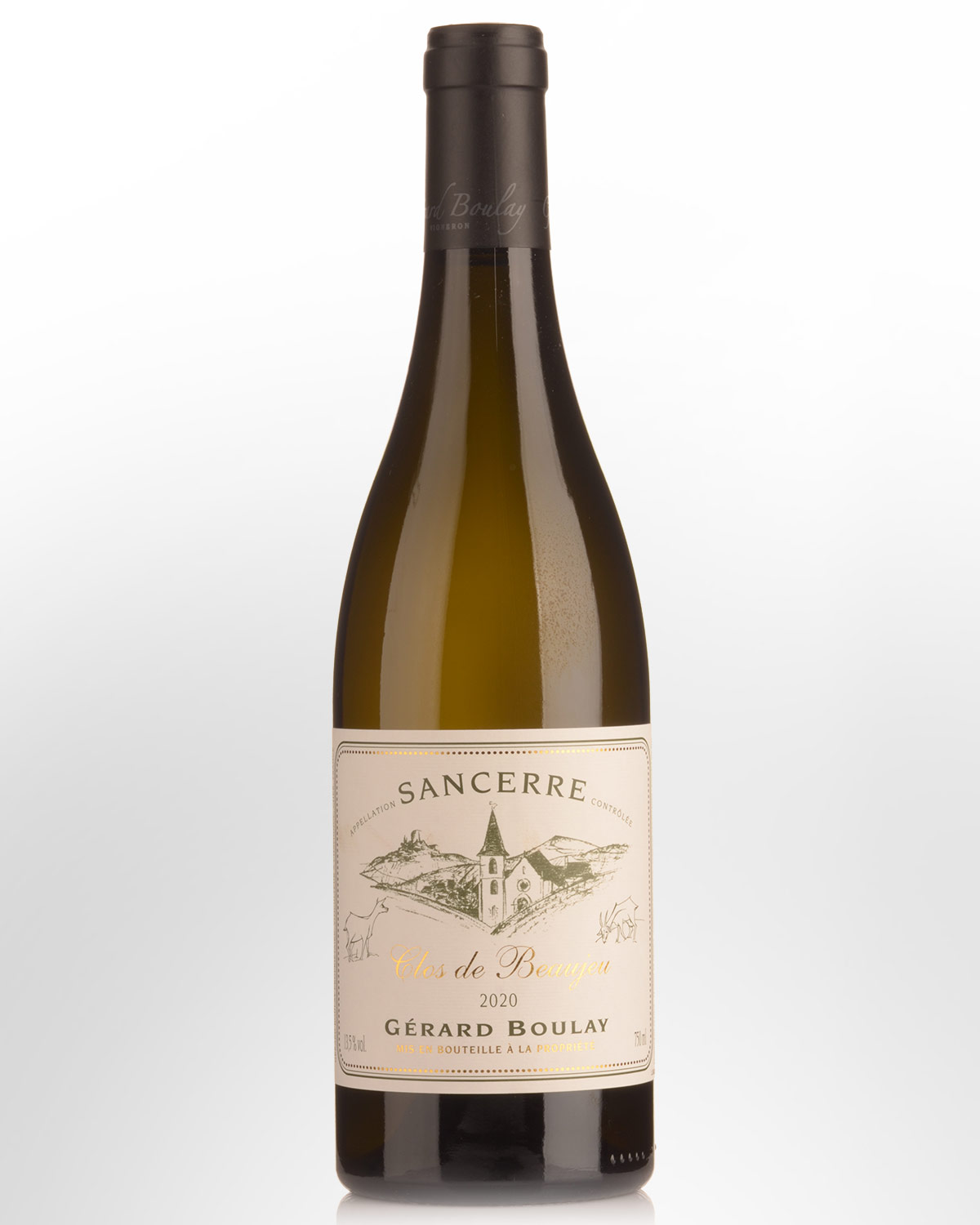
2020 Gerard Boulay Sancerre Clos Beaujeu
Just like any other well-known wine region in France, Sancerre has its own de-facto vineyard hierarchy. Officially endorsed or not, there’s no doubt that Sancerre’s greatest sites (barring an exception or two) are concentrated around the hamlet of Chavignol. Chavignol’s steep, south and south-east facing limestone slopes are home to historically revered sites like Les Monts-Damnés, La Grande Côte and Le Clos de Beaujeu—are, without doubt, the most potent terroirs of Sancerre. It’s no fluke that the top wines from this village regularly draw comparison to the great white wines of the world. Nor is it a fluke that this tiny village is home to an unusual concentration of Sancerre’s most revered winegrowing families. In Chavignol, the best wines have little (or nothing) to do with varietal character. They are fleshier, rippling, more textural—and less Sauvignon. No other terroir in Sancerre brands its wines with the same kind of flesh and saline minerality.
Gérard Boulay can trace his wine growing roots back to 1380, so you could figuratively say that the Boulay family wrote the book on Chavignol. He works predominantly with old vines, all planted by massale selection on quality rootstock and at a higher density than most Sancerre vineyards at 7500 vines per hectare. The soil is ploughed, or grass is grown to prevent erosion, and the Domaine has been practicing organics for decades. In the cellar, Gérard works with wild ferments, old oak (his 10- to 12-year-old barrels are sourced from Alphonse Mellot) and very little sulphur during élevage. The wines are bottled without filtration. It has been said many times that with the remarkable limestone-rich Chavignol holdings, the outstanding work of Boulay and his team in the vines, and the fact that this artisan is currently crafting the finest wines of his career, all place this Domaine at the apex of France’s white wine hierarchy.
Boulay farms two parcels in this terroir, including one within the original Clos of the vineyard (established by the monks of Beaujeu in the Middle Ages). Vines on this slope of Kimmeridgian limestone and clay (terre blanches) are aged between 30 and an incredible 110 years! The soils here are particularly rocky and strewn with fossils, much like parts of Chablis. These textured soils make this parcel very difficult to farm. A second, even steeper parcel lies closer to the village. Together these southeast-facing plots make Clos de Beaujeu the source of some of the Domaine’s most structured and nervy wines. This wine was naturally fermented and raised in large, upright cask (60%) and in three- and four-year-old 300 litre barrels (40%), for 10 months.
